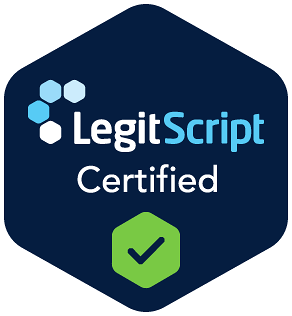Living with ADHD can feel like juggling many balls. This happens a lot. Some days, you are focused, and you get a lot done. Other days, brushing your teeth is hard. This mental load can build up. If you don't rest, something breaks. This is when ADHD burnout happens. It does not mean you are lazy. It means your brain has been running for a long time, and it hasn't stopped. Let’s talk about what’s really going on—and what you can do.
What Is ADHD Burnout?
ADHD burnout is not just being "tired". It is a very deep tiredness. It makes your thoughts, your mood, and your body feel bad.
It’s not a diagnosis in the medical books. But many people with ADHD feel it a lot. It happens when you use too much energy. You use it to do your daily things. You also use it to control problems like not being able to focus, feeling up and down, and doing things without thinking.
After a long time, your brain and body can't do it anymore. Then, everything feels too hard.
What Causes ADHD Burnout
ADHD burnout doesn’t show up out of nowhere. It builds up slowly over time.
Common causes include:
● Too many tasks at once.
● Poor time management.
● Emotional overload.
● Perfectionism.
● Hyperfocus.
● Masking ADHD.
● Lack of support.
● Skipping self-care.
Symptoms of ADHD Burnout
Burnout doesn’t look the same for everyone, but many people share a few signs.
Mental and emotional symptoms:
● Feeling numb, stuck, or hopeless
● Zero motivation for work or hobbies
● Mood swings or outbursts
● Negative thoughts about yourself
● Avoiding people and social situations
● Struggling with focus even more than usual
● Feeling like everything is pointless
Physical symptoms:
● Always tired, no matter how much you sleep
● Stomachaches, headaches, or body pain
● Getting sick more often
● Changes in eating or sleeping habits
Work and school signs:
● More mistakes
● Falling behind on tasks
● Lower job satisfaction
● Skipping work or class without clear reasons
Burnout and depression share some symptoms. But burnout is usually linked to specific situations. Depression often affects every part of life. If you’re unsure, it’s best to talk to a mental health professional.
How to Deal with ADHD Burnout
It’s not easy to recover once you’re burned out—but you can bounce back. The trick is to focus on recovery and prevention at the same time.
Try these tips:
● Stop blaming yourself. You’re not failing—you’re overwhelmed.
● Pause or delegate things that drain you.
● Stick with just 3 to 5 key tasks per day.
● Rest, healthy food, and short walks can reset your energy faster than you think.
● Use planners, sticky notes, or apps.
● Practice turning down things that stretch your time and energy.
● Break large tasks into mini steps.
● Checking one box off your list still counts.
● Friends, ADHD support groups, or even just one trusted person can give a huge boost.
● Consider professional help. One option is FasTreat, a telehealth platform where 70% of clinicians have over 10 years of experience and advanced ADHD training. We use evidence-based approaches like ACT therapy and ADHD-specific interventions to build personalized treatment plans. Having a care team that understands both the science and the lived experience of ADHD can make recovery feel less confusing and more doable.
The ADHD Burnout Cycle
Here’s what the ADHD burnout cycle looks like for many:
1. You take on a new task or challenge. At first, it feels exciting.
2. ADHD symptoms kick in—distractions, delays, and mental fatigue build up.
3. Stress rises, and motivation fades. You start to question your abilities.
4. You avoid the task, procrastinate, or work nonstop without resting.
5. Exhaustion hits. Now you’re stuck, guilty, and frustrated.
6. Eventually, you recover a little and start again—only to fall into the same loop.
How to break the cycle:
● Pay attention to the first signals: tiredness, irritability, brain fog. That’s the best time to pause.
● Choose one thing to shift. Take a nap. Say no. Delay a task. That small change can break the chain reaction.
● Add routines that support your energy instead of draining it. Think “supportive rhythm,” not strict schedule.
● Don’t try to fix your whole life in a weekend. Pick one habit—like sleep—and start there.
● You don’t have to figure everything out alone. Let others step in when you need backup.
You’re Not Lazy—You’re Overloaded
Burnout is not the end. It’s a signal that something has been too much for too long. ADHD means your brain works differently—but that doesn’t mean you’re broken. You just need tools that fit your brain, not someone else’s.
Start small. Rest more. Say no without guilt. And remember, every step you take counts.
You don’t need to run faster. You need to stop running on empty.
